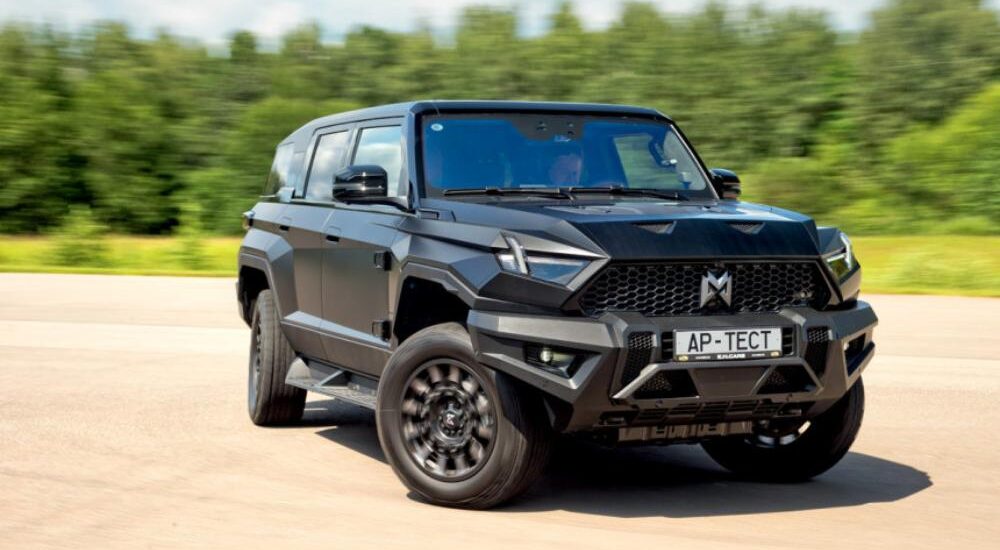Crrr—the scales at the Author Review Tech Center at the Dmitrov testing ground groaned under the weight of the brutal Chinese hybrid M-Hero 917. Curb weight: over 3.2 tons! The hit of the season, the dream of every real man? But where are these monsters on the roads? I think I know why.
So, Dongfeng Monshi.
Let’s learn some Chinese. The name of the automotive giant Dongfeng translates from Chinese as “east wind” — the very “dongfeng” that, according to the great Mao’s doctrine, will defeat the West. If FAW is the First Automobile Works, founded by the Chinese Communist Party in 1953, modeled after Moscow’s ZIS factory, then Dongfeng could be abbreviated as SAW: it’s the Second. With a complicated history: the decision was made back in 1957, but the choice of a strategically safe location, in accordance with Mao’s “Third Front” concept, and the construction starting in 1969… In short, Dongfeng only began mass production of the “East Wind” trucks in the mid-70s.
Now, however, Dongfeng also includes the Voyah brand. But the company’s primary focus remains on heavy-duty equipment — primarily military. For instance, the EQ2050 all-terrain vehicles, modeled after the American HMMWV. These vehicles, not the original Hummers, carry brave special forces in Chinese action films like Operation Red Sea. Seen Operation Red Sea? Highly recommend it, great cinematography. And it provides insight into why the Second Automobile Works created a separate brand, Mengshi—“Warrior”—for their military and civilian off-road vehicles. Specifically, with a capital “W.” Because “warrior” in Chinese is “jiangshi,” but “Monshi” means “Warrior.” Specific, if you will. The Warrior.
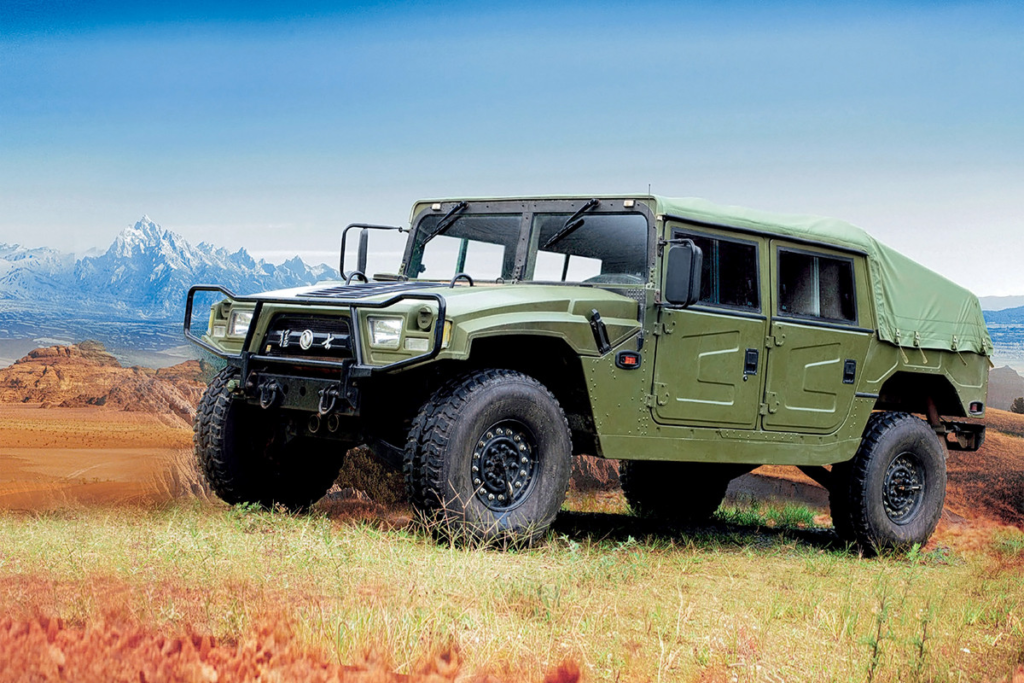
The Dongfeng EQ2050/2058 is what is called a “one-piece pull”: after the US Gulf War, the Chinese bought a Humvee, disassembled it and copied it. The vehicle kits were initially bought in the States, but gradually everything was localized except for the GM V8 turbodiesel (the Cummins “four” is produced in China under license). The all-terrain vehicles weigh at least 3.2 tons, reach speeds of up to 130 km/h, are equipped with a central tire inflation system and are available in a variety of versions (the first slide is the basic military version, the second slide is the civilian Mengshi M50)
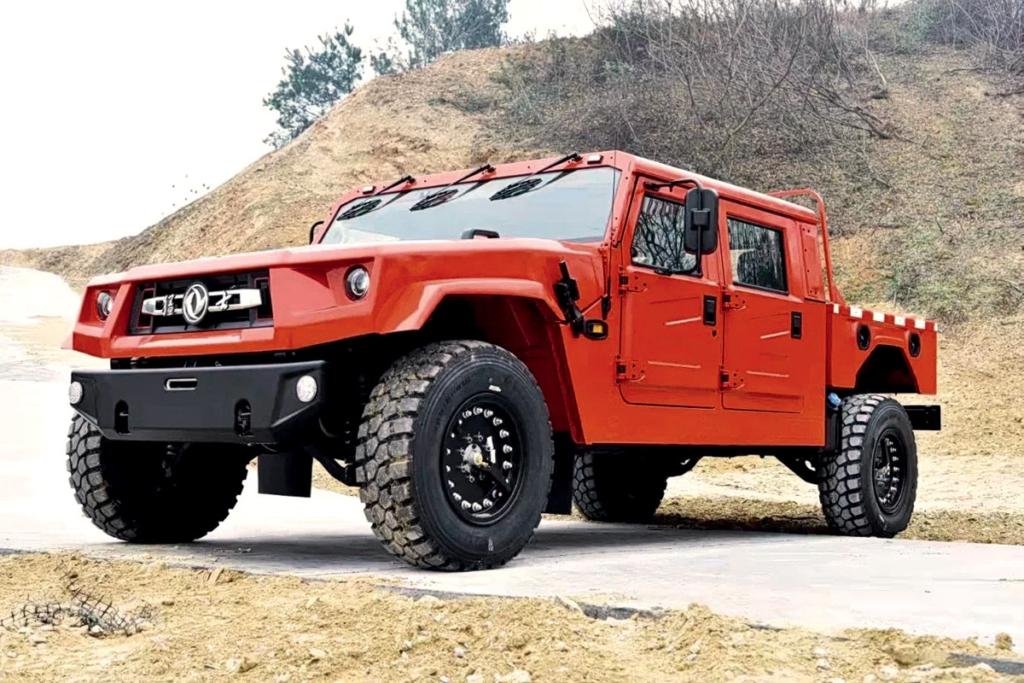
So, in China, it’s Mengshi 917. But M-Hero is the export name: Dongfeng is aiming for markets in the Middle East and even Europe. In Russia, vehicles from “East Wind” are officially imported by the company Motorinvest, and I hoped to not only test the Warrior but also clarify a few points. For example, why 917? Is it in honor of the Porsche racing cars? But after my article on the Evolute i-Jet, the Motorinvest press office for Author Review—oops—is closed. What did I say that was so bad?
Luckily, the M-Hero 917 was available through our friendly company E.N.Cars. Though unofficial and without plates, here it is, on the testing ground scales. And on the dynamometer straight.
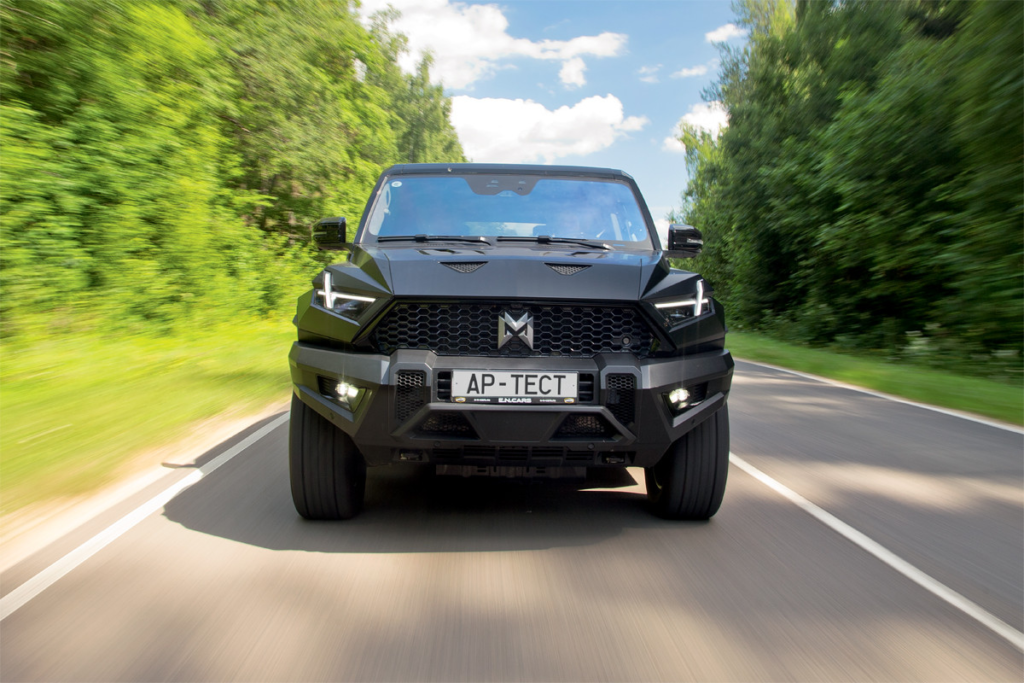
In China, the M-Hero also comes as a “pure electric” vehicle with four electric motors totaling 800 kW (1,088 hp) and a 143 kWh battery, but in Russia, only hybrids are imported. These have just one electric motor on the front axle, but under the hood, there’s a range extender in the form of a 145 kW (197 hp) turbo four-cylinder engine, which drives a 100 kW generator. Three 200 kW electric motors—two at the rear—provide a total of 600 kW or 816 horsepower. Seems like a lot, and when divided by the measured 3,263 kg, that results in 250 hp per ton. In terms of power-to-weight ratio, that’s in the same league as fast cars like the Porsche 718 Cayman GTS. Whew, we’re about to hit four seconds to 100 km/h!
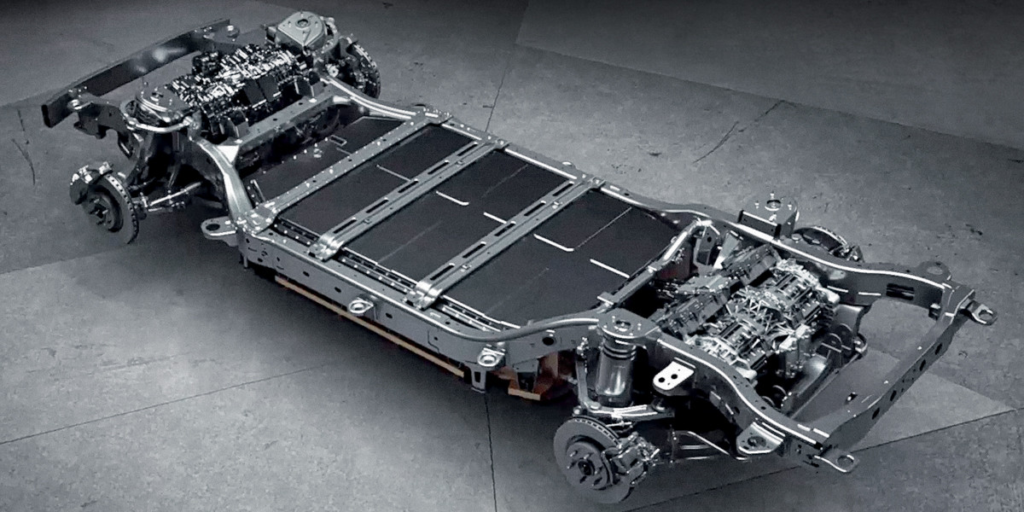
The Mengshi 917 is based on a powerful spar frame with a traction battery built into it. The electrical technology is far from advanced: the synchronous electric motors are low-speed (up to 13,000 rpm) and 380-volt, while the hybrid battery only produces up to 350 V. The front traction gearbox is single-stage, and the rear one has a two-stage transmission built into it.
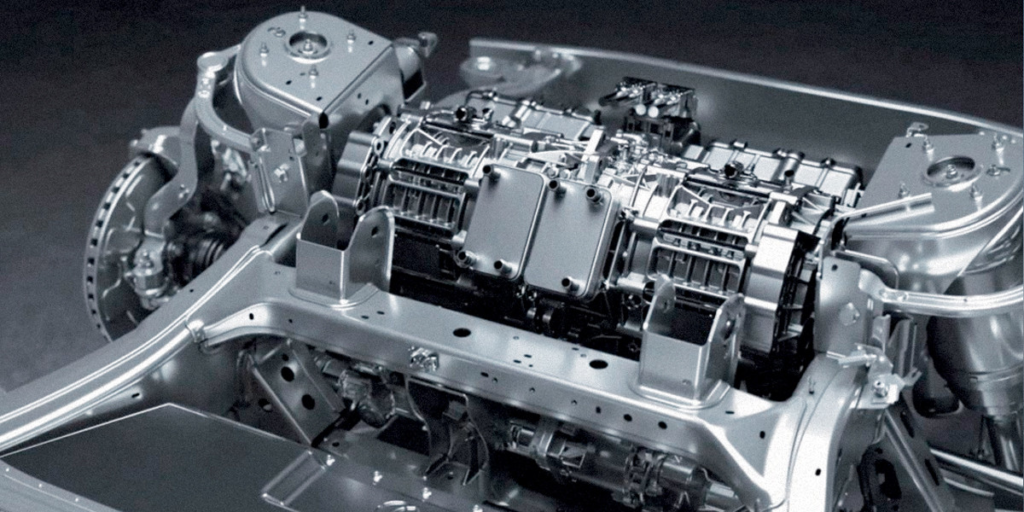
Pedal to the metal—and…
No, not silence—under the hood, the gasoline engine monotonously sputters. I had pre-selected Sport mode (the display turned a crimson hue) and switched the hybrid powertrain into its most “charging” mode: even though the traction battery is nearly full, it won’t deplete.
Hey, where’s the attack?
The hybrid doesn’t have launch control — only an electric vehicle can start off with two pedals. So, the M-Hero reaches 100 km/h in 6.3 seconds. Moreover, after 120 km/h, the acceleration rate slows down and only picks up again at 150 km/h. In other words, the thrill is not only absent but almost lost. After that, the three-ton giant leisurely reaches its top speed of 201 km/h in 48 seconds.
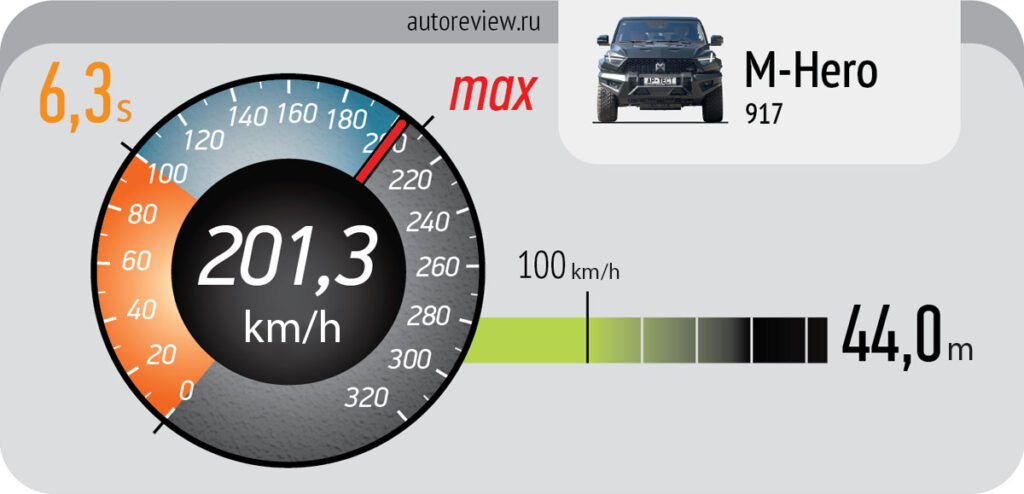
| Parameter | M-Hero 917 |
|---|---|
| Maximum speed, km/h | 201.3 |
| Acceleration time, s | |
| 0–50 km/h | 2.5 |
| 0–100 km/h | 6.3 / 6.3* |
| 0–150 km/h | 15.4 |
| 0–200 km/h | 48.9 |
| Over 400 m | 15.0 |
| Over 1000 m | 27.5 |
| 60–100 km/h (D) | 3.5 |
| 80–120 km/h (D) | 4.5 |
| Braking from 100 km/h | |
| Distance, m | 44.0 |
| Deceleration, m/s² | 8.8 |
| Braking from 150 km/h | |
| Distance, m | 99.2 |
| Deceleration, m/s² | 8.7 |
Acceleration with two pedals / using foot transfer
On the one hand, the passport promises six seconds. But on the other hand—what happens when the battery is half empty? And when it’s drained, and this giant is being pulled by a 100 kW generator while simultaneously charging the batteries?
And what about that strange dip in performance? I can only assume that at 150 km/h, the two-speed rear power module shifts gears. A manager at the official Motorinvest showroom took a timeout when I asked about the two-speed system, but then called back and explained that the shift happens at… 40 km/h (so, is that a reduction gearbox?). Too bad the experts at E.N.Cars haven’t “dug” into the M-Hero yet.
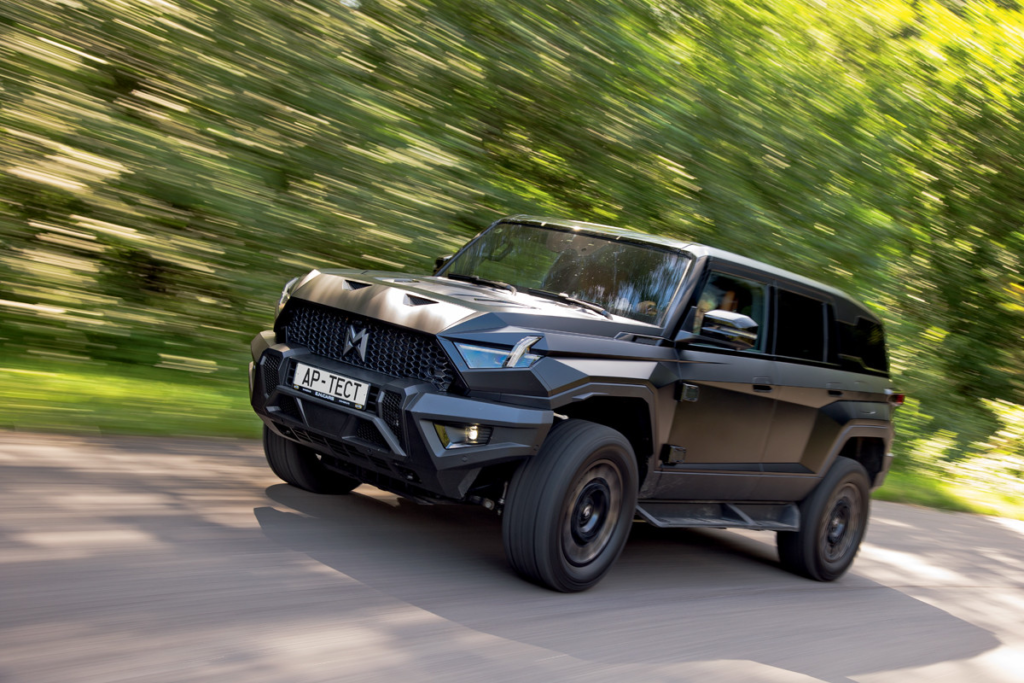
In any case, I would have liked more performance. After all, the monstrous electric pickup GMC Hummer EV accelerates to 100 km/h in 3.7 seconds and, a year ago, tipped the scales at 4,147 kg.
However, it took an eternity to brake from that “hundred”—48 meters from the start of braking. The M-Hero, though, is a bit safer—44 meters: Brembo doesn’t make half-baked products and created powerful fixed calipers for the M-Hero. However, the electric off-roader Rivian R1S, which Vladimir Melnikov tested in tandem with the Hummer, beats it easily in both acceleration (3.8 s) and braking (39.5 m) with a similar weight of 3,124 kg.
Reducing the distance could be helped by road tires, Pirelli Scorpion, which are also equipped on the M-Hero. Honestly, they would be a better match for the driving characteristics than these “aggressive” Chaoyang Arisun A/T tires.
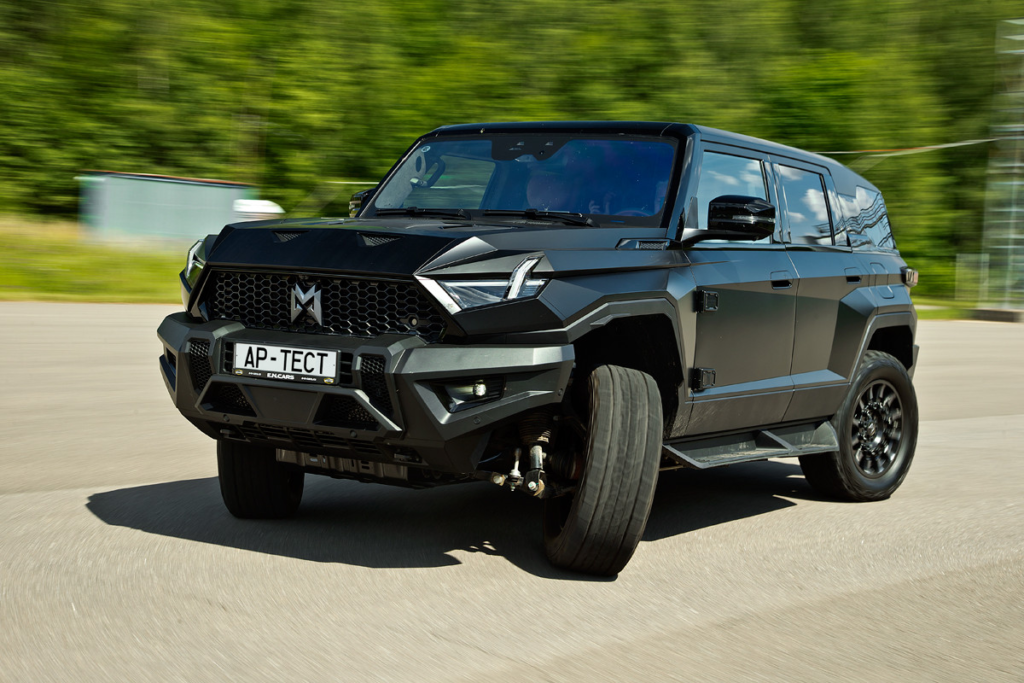
Because, if you’re not expecting any wow moments, the acceleration isn’t bad: the Mengshi 917 responds easily and precisely to the pedal. It keeps a straight line well, and on turns, the steering responds with some lean, but smoothly and predictably. An unexpected bonus—clear reactive feedback from the electric power steering. And the measured turning circle, as recorded by Mokhov, is just 10.7 meters! Thanks to full steering control with impressive angles of rear-wheel turning—claimed to be 10.6 degrees.
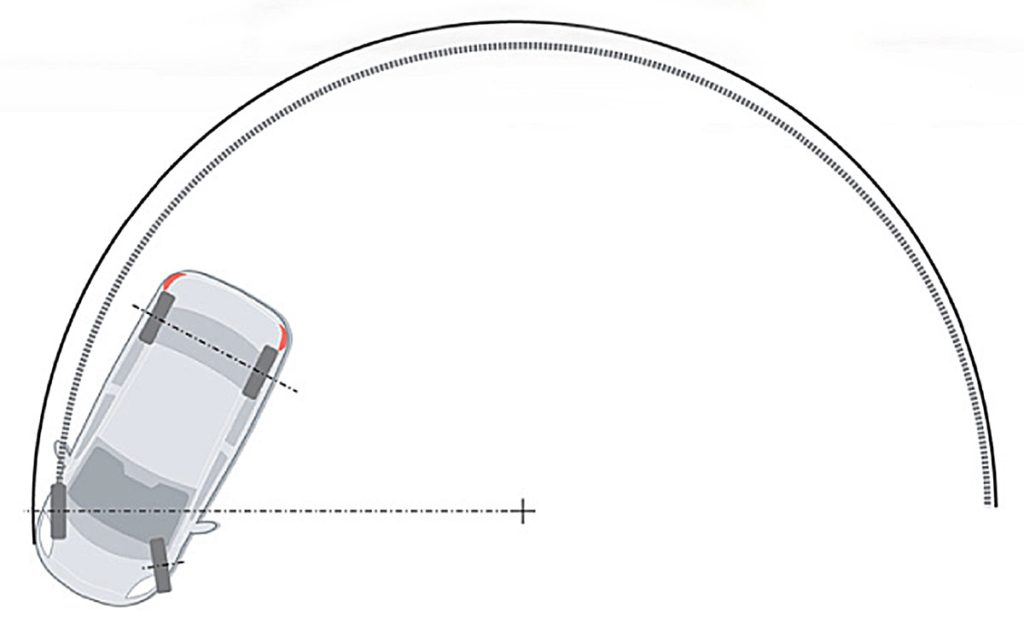
| Parameter | M-Hero 917 |
|---|---|
| Diameter along the track of the front outer wheel, m | 9.9 |
| Diameter along the front outer dimension, m | 10.7 |
But in a fast corner… Just forget it. On wet asphalt, the M-Hero slides out with its brutish front end, desperately churning the 20-inch “chaoyang-arisun” tires—unfortunately, the shock absorbers can’t handle such conditions. The ride quality isn’t impressive either: vibrations from unsprung masses shake the body everywhere, as if there were rigid axles here. And the active Magic Carpet system, which uses images from front-facing cameras to detect bumps and prepares the electronically-controlled shock absorbers for damping, doesn’t seem to help much.
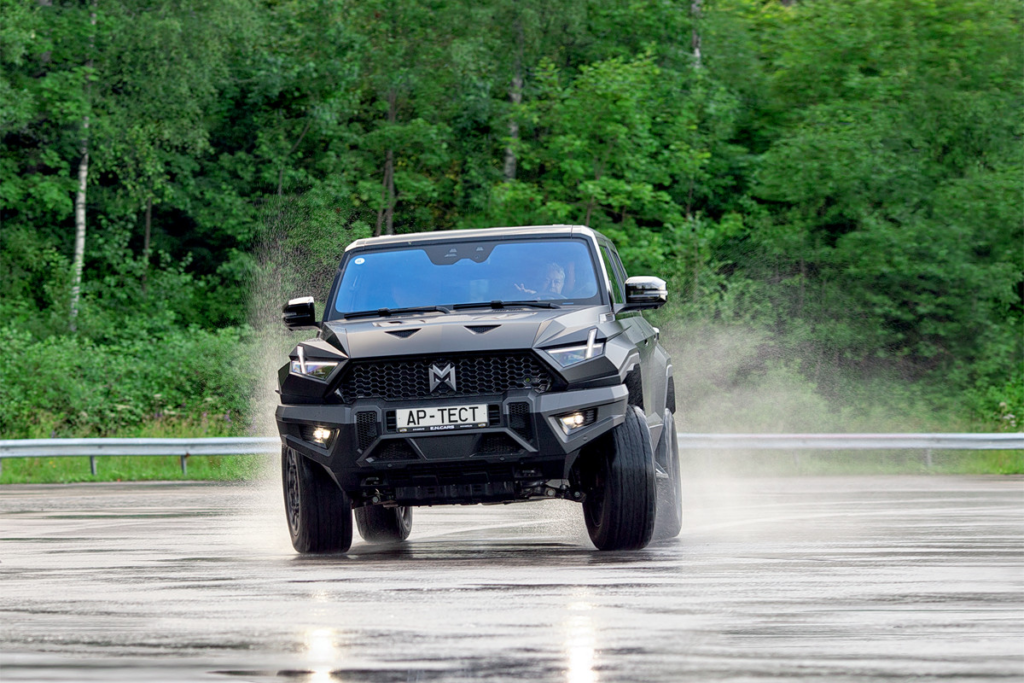
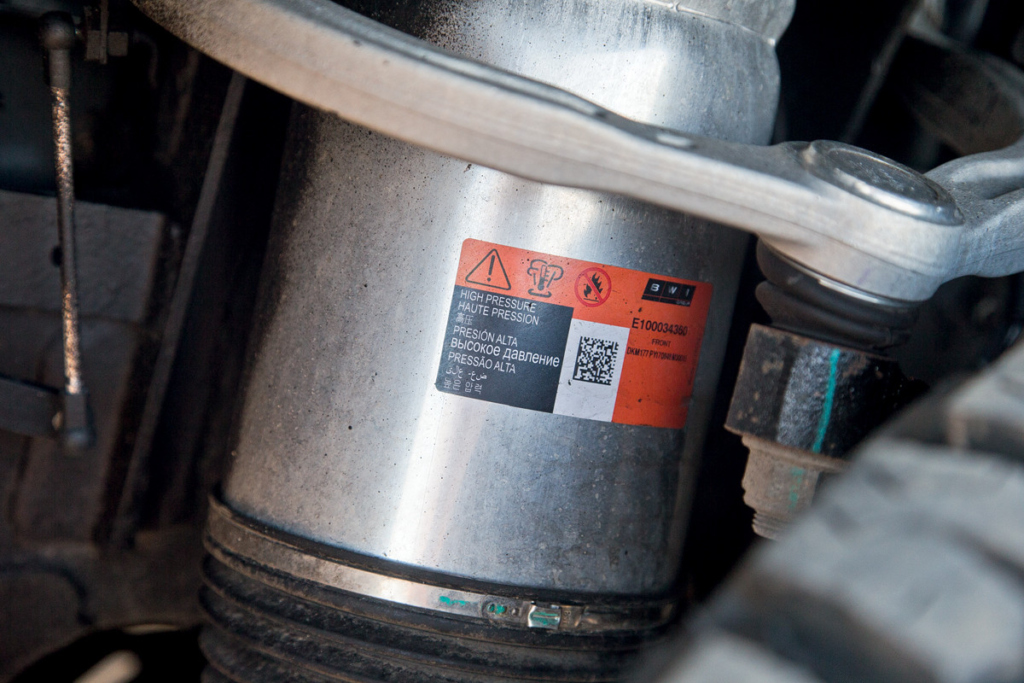
But the ground clearance—wow! The air suspension can lower the M-Hero’s body to crossover-like 208 mm, but in its highest position, the underbody is 353 mm from the ground. Add to that the commendably large approach (36.2 degrees) and departure (37.2 degrees) angles…
Dimensions, weight and weight distribution along the axes
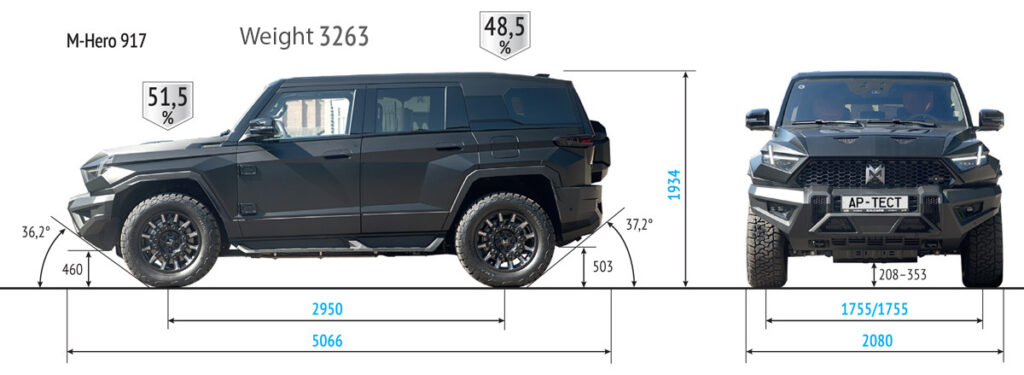
Manufacturers’ data are highlighted in blue, Autoreview measurements are highlighted in black.
Dimensions are in millimeters.
Actual vehicle weight without driver, with full fuel tank and full process fluids
The M-Hero does have off-road potential. But the three main issues off the asphalt are high weight, lack of rigid kinematic connection between the axles, and somewhat weak electronics tuning. From a diagonal lifting, which happened too early due to the not-so-impressive wheel travel, the Mengshi 917 only managed to get out after forcing the inter-wheel lockers into action. It started confidently up a grassy incline but quickly began digging holes with its “toothy” tires. And it’s not easy to manage the traction off-road—yes, there are plenty of modes, but the controls are “opaque,” purely electronic.
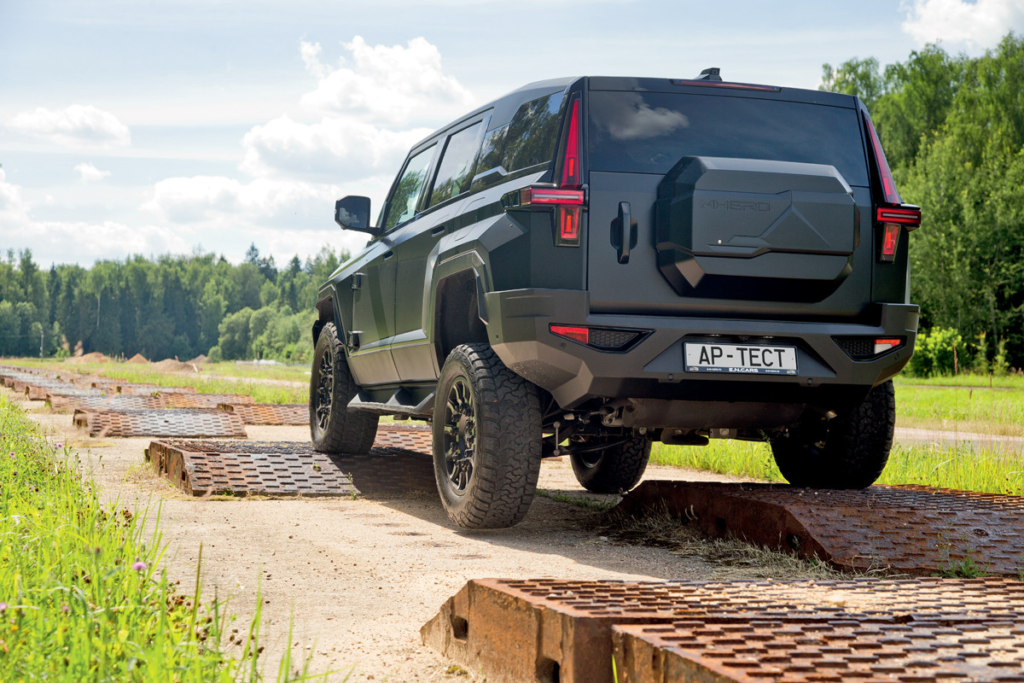
But there’s the “crab mode.”
I haven’t driven the Hummer EV, so this was my first time trying it. The sensation, let me tell you, isn’t for the faint-hearted. However, the angle of the crab-mode wheel turns is limited, and the actuators on the rear wheels aren’t omnipotent.
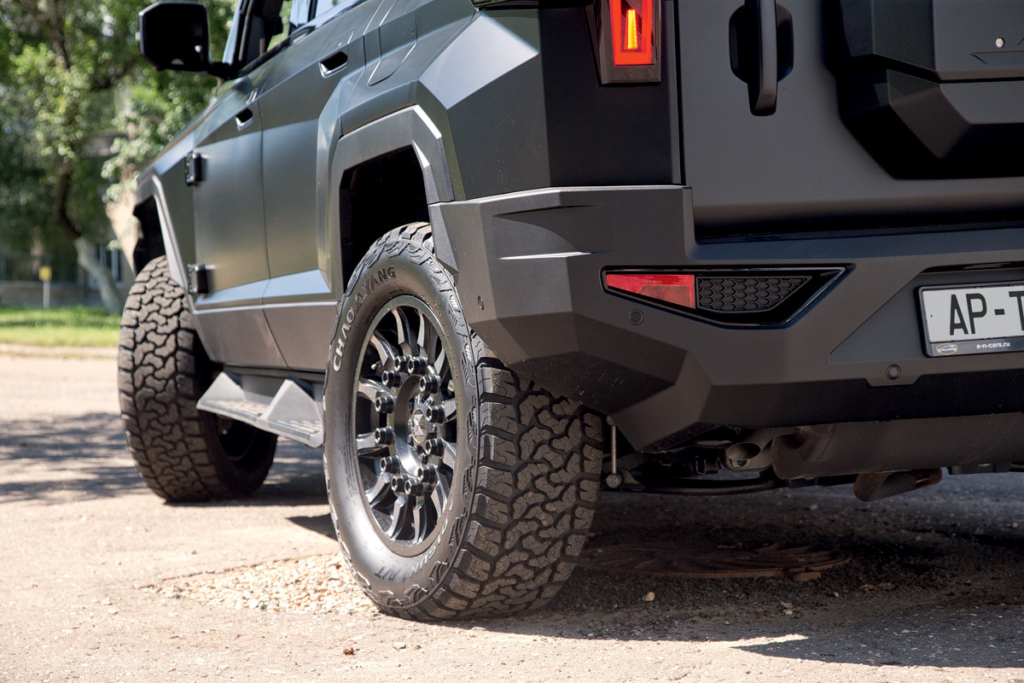
And why does the Warrior need this?
I have a guess. It’s like the martial art of Kung Fu! You know it, right? The tiger style, the monkey style, the drunken master… And this one’s like a crab. Normal M-Heroes always go around. Enough with the talking, forward and sideways, and then—well, these are our crabs, they’ll help us. And the enemy, who certainly didn’t expect such a move, gets confused—they are demoralized, disarmed, and surrender to the mercy of the victor. Or rather, The Victor.
But why 917? Like in that joke. “Petka, instruments? — Seventeen! — What seventeen? — And what about the instruments?”
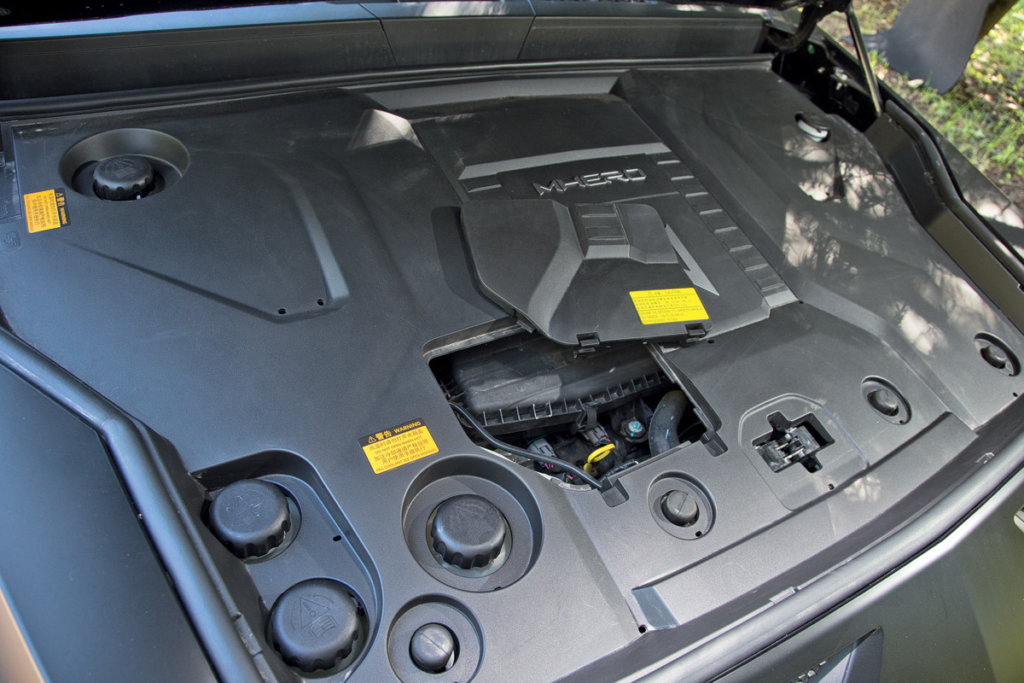
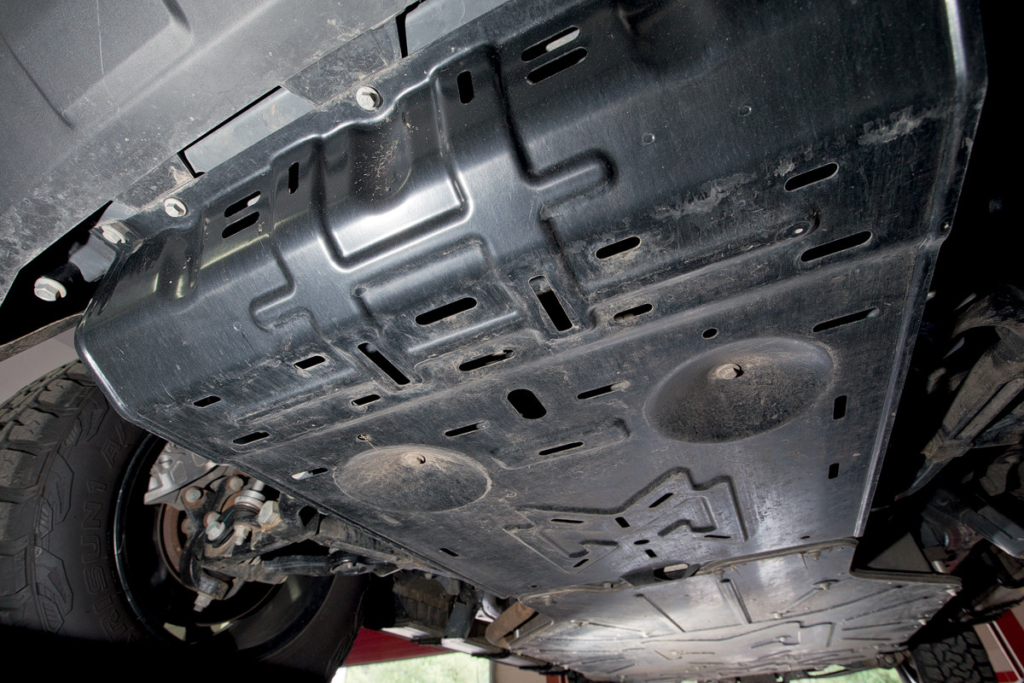
I tried searching with Google Translate for the characters—no luck, all the Chinese websites just had the same press release summaries. The intellectual off-road architecture of Mengshi M-Tech, the MORA platform (Mengshi Off-Road Architecture), blah-blah-blah… The turbo engine Dongfeng C15TP1, known from Aeolus cars, was developed with Honda’s help. The traction battery is CATL with a “triple” NMC cathode (nickel, manganese, cobalt). There’s no information on the motors, generator, or the controlling electronics. How I would love to learn, for example, about the design of the traction modules: how are the two motors connected, how are the differentials locked? How are the axles synchronized? Unfortunately, inspection on a lift didn’t clarify much. Except that the rear-wheel actuator had a sticker with the ZF logo.
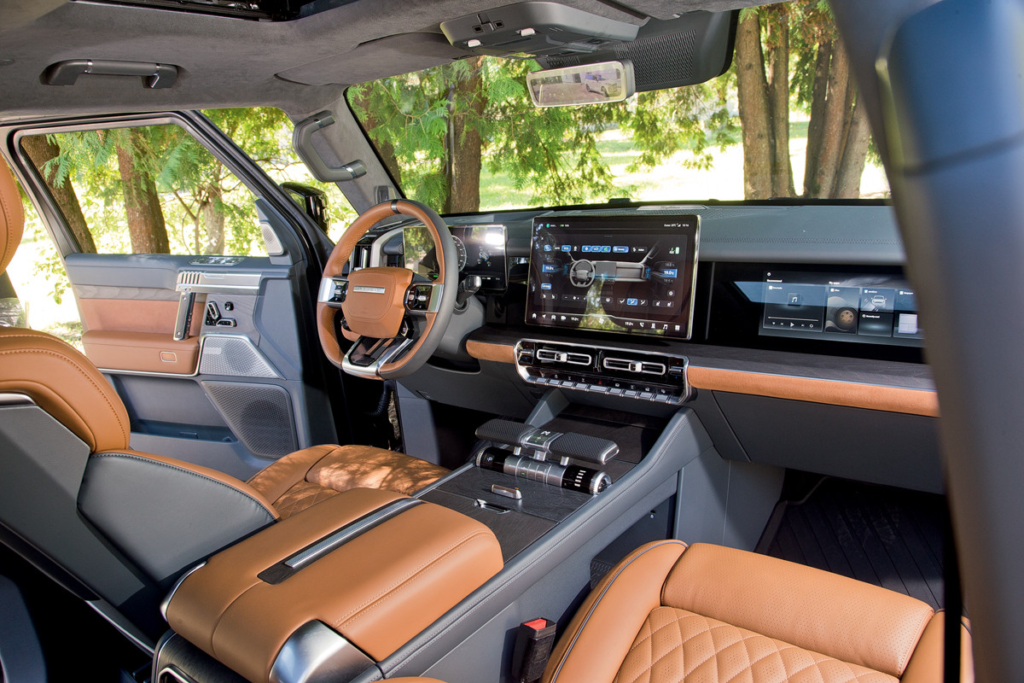
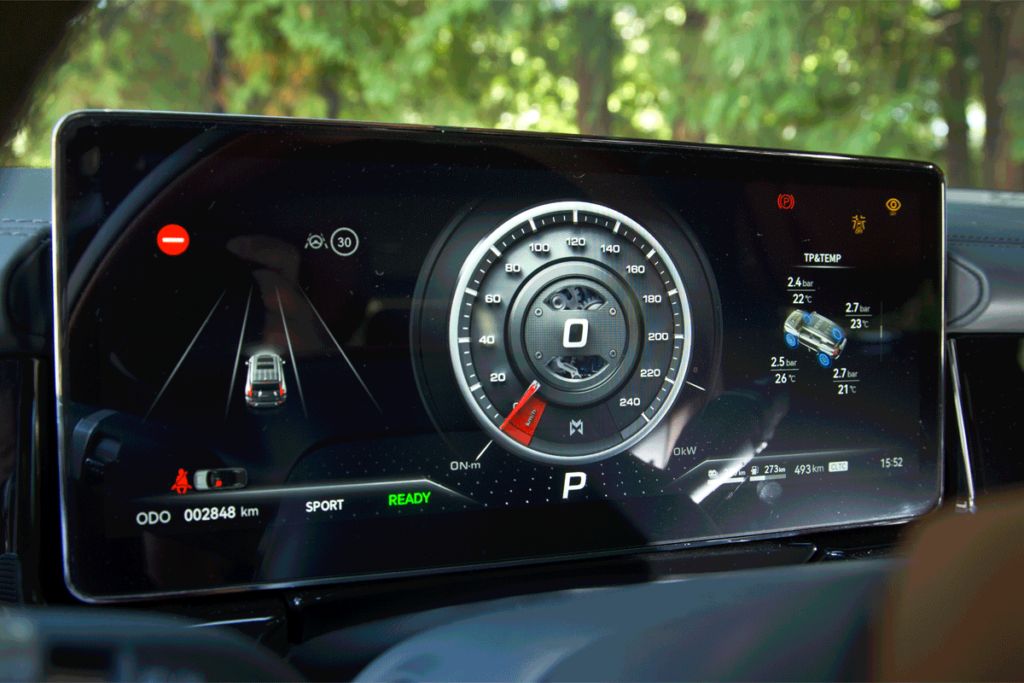
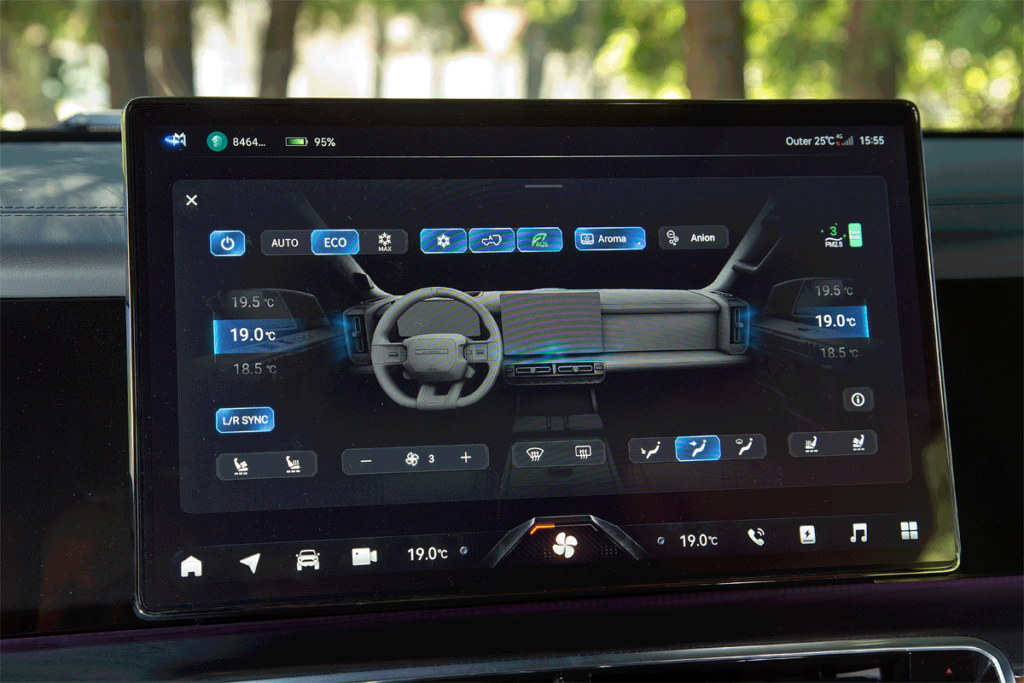
A search for people didn’t reveal much either. It’s known that in 2021, Dongfeng hired a little-known designer, Henning Nopfle, whose pre-China resume only includes Volvo Trucks. But the interview with Car Design News about the style of the M-Hero 917 wasn’t given by Nopfle but by a young Chinese designer, Yulian Zhang.
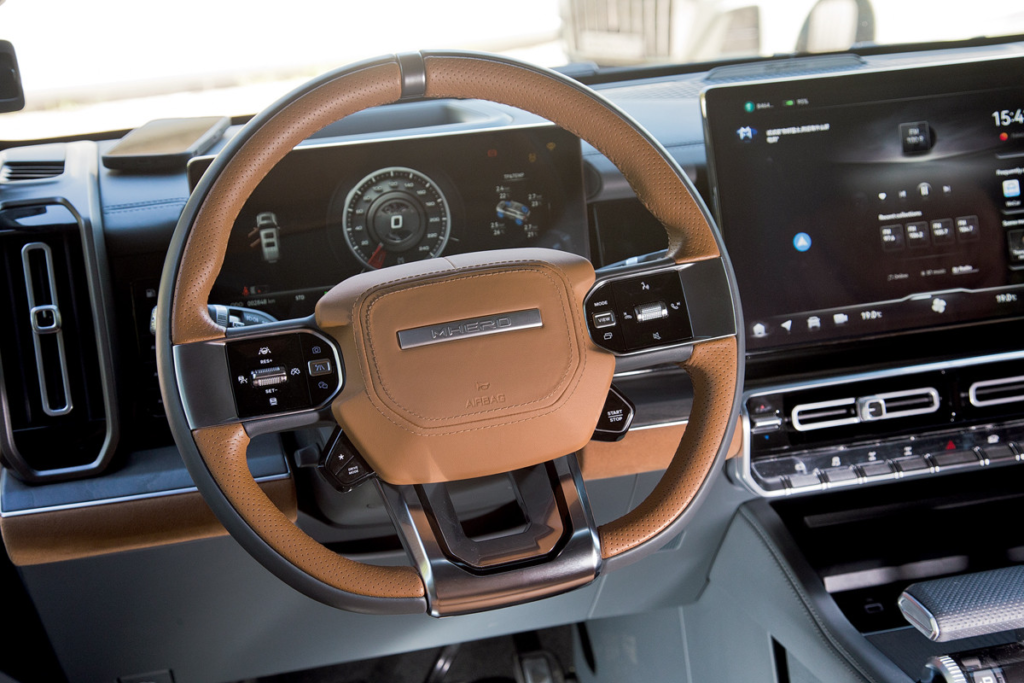
A steering wheel sawn off from below with a rally zero mark – how do you like that in a three-ton all-terrain vehicle?
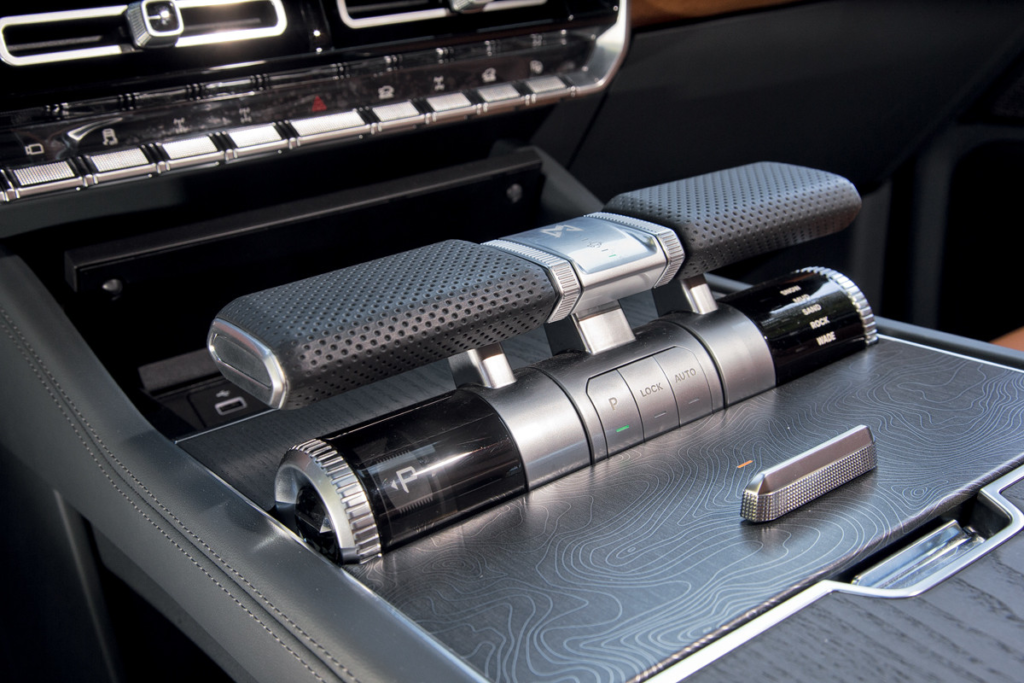
The highlight of the interior is the selector indicators in the form of flip calendars. You push the left lever towards you – and again it’s September 3rd, that is, D
Most likely, the M-Hero really has nothing in common with the military “Hummers” Dongfeng EQ2050, their civilian version M50, or the new CSK-131/141/181 transports. It’s a separate project. Was it successful?
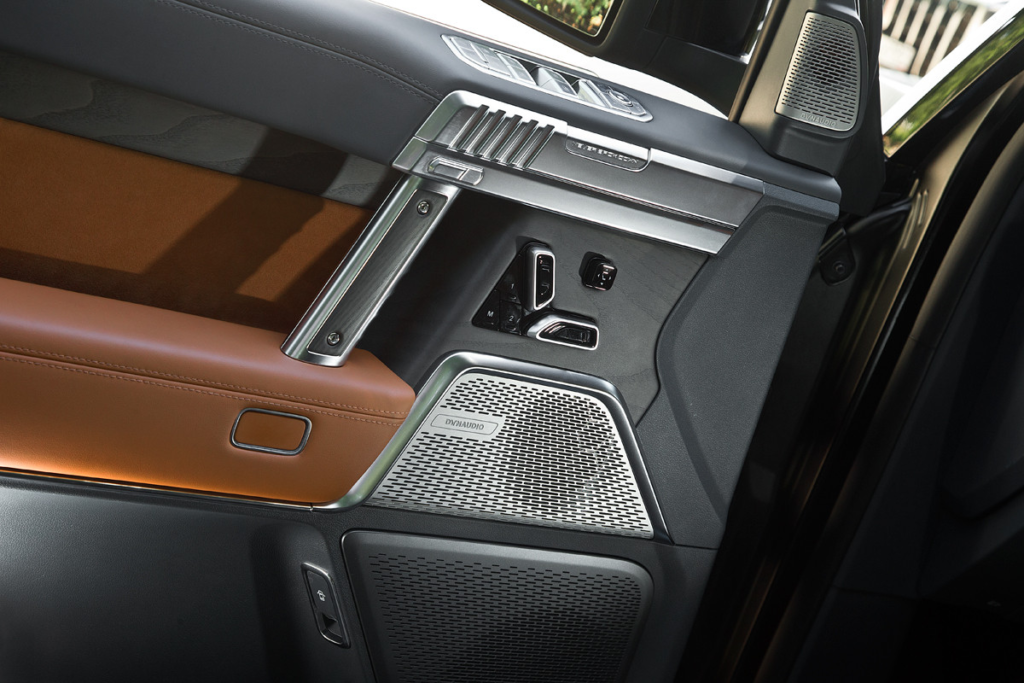
There are no closers, you have to slam the doors with all your might, and the speakers play the sound of a bolt being pulled. And pistols on the door cards. Kindergarten with a drum, by God
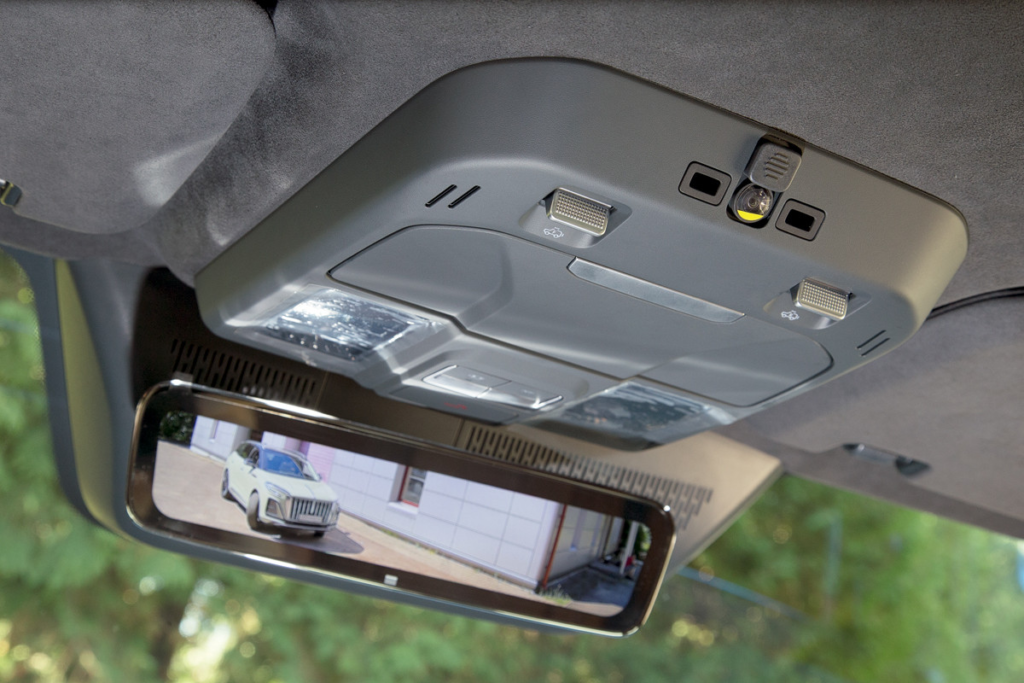
The video mirror has five viewing modes, both hatches can be opened with keys on the ceiling
On the one hand, the 917 is a sufficiently fast and brutish hybrid, one that even a delicate woman can drive. Yes, it needs to climb high, the visibility is somewhat tank-like, but the driver’s seat is comfortable, the finish is decent, and there’s a ton of service electronics, including exotic features like night vision or echo-locators for determining ford depth. According to the Chinese CLTC cycle, you can drive 200 km on the 65.8 kWh battery, but in reality, the electric range will be at least half that. However, fill the 84-liter tank with “ninety-second” fuel and drive as long as you want, as the gasoline engine has no unpleasant vibrations. The M-Hero is even commendably quiet, even with off-road tires.
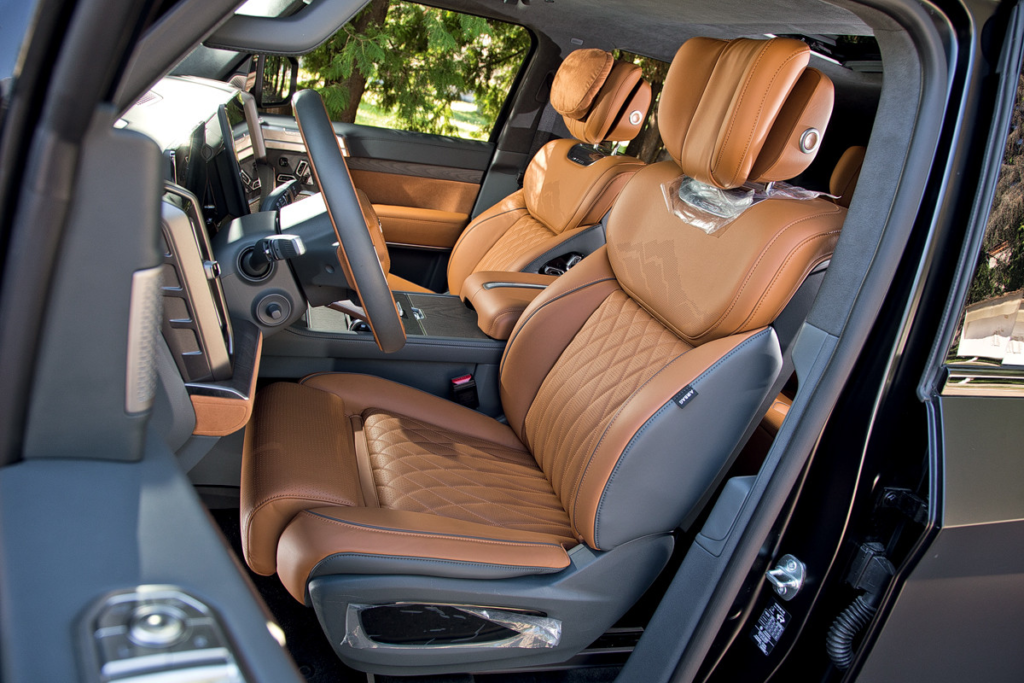
The seats are wide and comfortable (note the “ears” of the headrests)
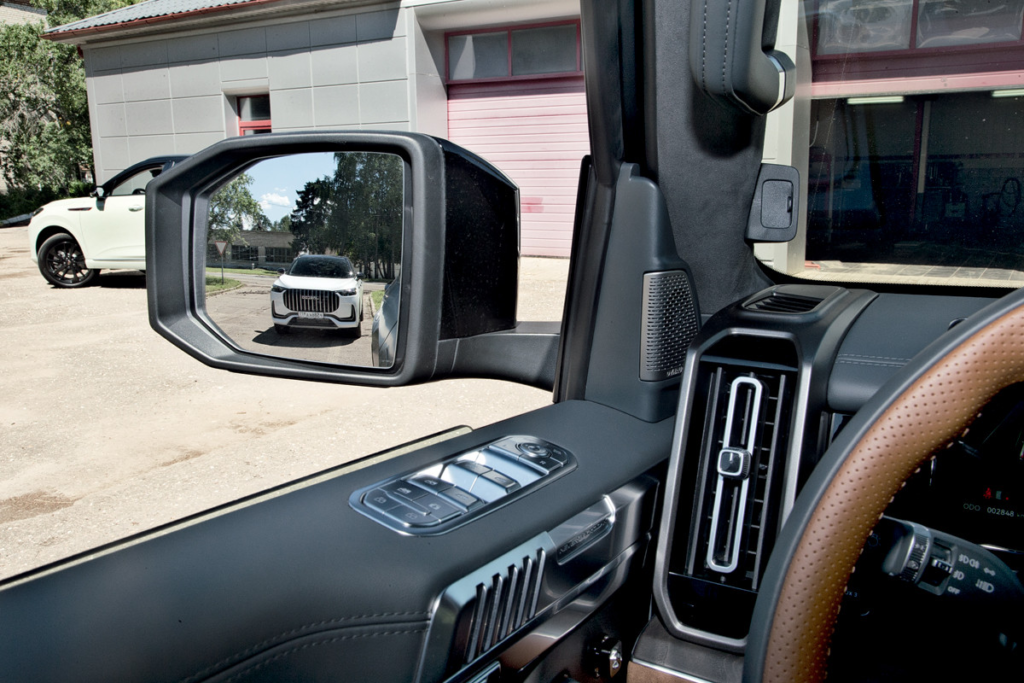
The exterior mirrors are large, and the capabilities of the cameras and generated “pictures from the outside” are more than sufficient
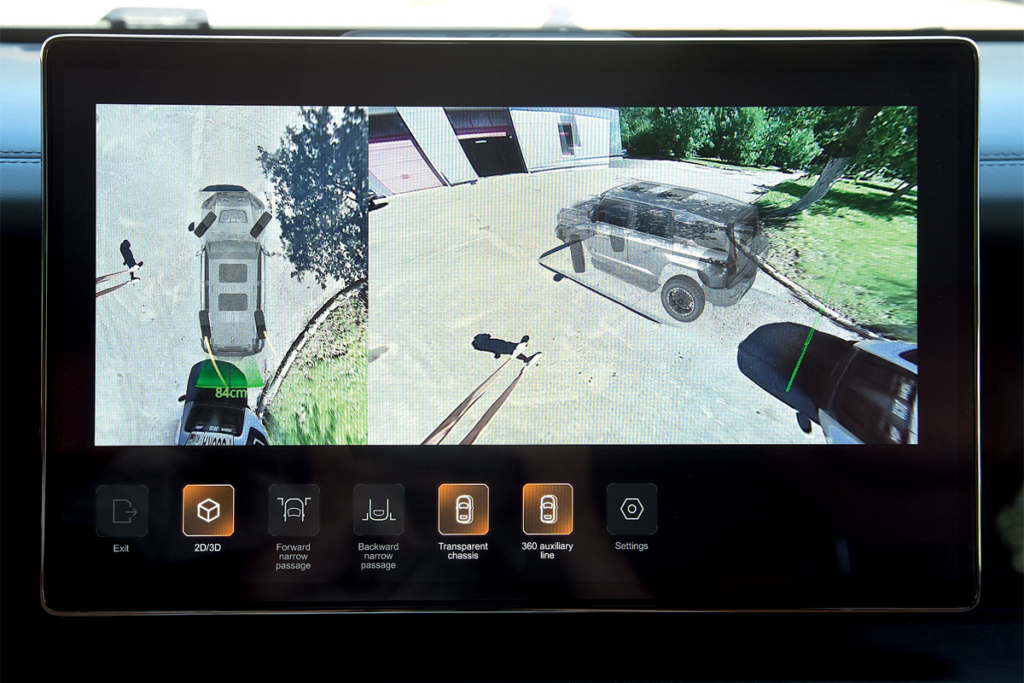
Unfortunately, I wasn’t able to test the adaptive cruise control in action—nor try out the night vision or echo-locators. The massage feature is unremarkable, and the Dynaudio-branded audio system is average. Claims to premium status? Valid, but not fully supported.
So, the question arises: why would anyone buy the expensive M-Hero 917? At E.N.Cars, they’re ready to sell the vehicle for 10 million rubles, but without a warranty and with the requirement to have a “truck” category C driver’s license. Official dealerships, on the other hand, raise prices by 4 to 6 million rubles—unless you take out a loan or trade in your dreaded G-Wagen for the M-Hero. But, of course, you get a five-year warranty and a category B license.
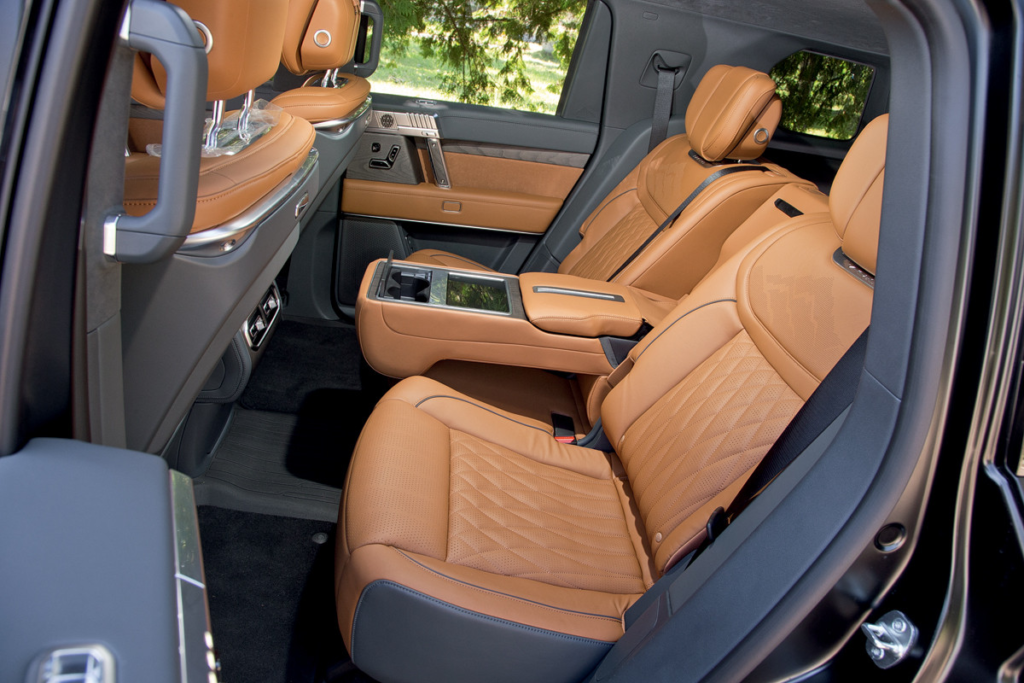
It is spacious in the back, except that the ceiling is a bit low, as is often the case in frame cars.
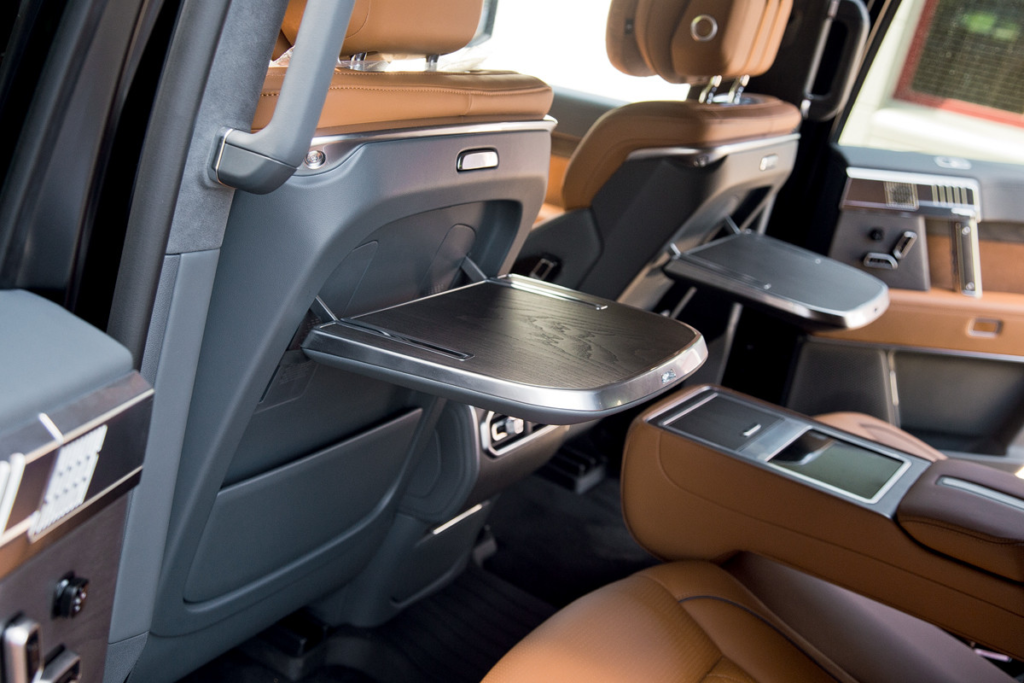
There are folding tables and a tablet in the armrest – it contains full control of heating-massage-ventilation
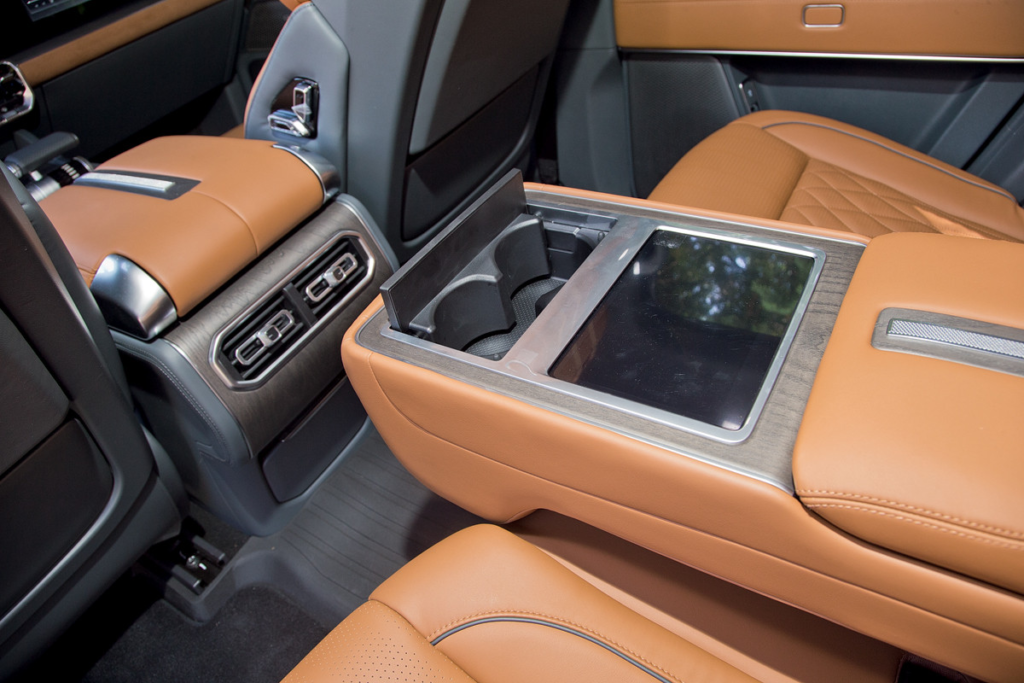
It’s interesting how Motorinvest managed to classify the M-Hero with its 240 kg weight overage into the passenger vehicle category, with a full weight of up to 3.5 tons. I remember that twenty years ago, the same challenge was solved by Avtotor, removing the third row of seats, tubular side-step protection, a tire compressor, a second battery, and other non-essential equipment from the official Hummer H2.
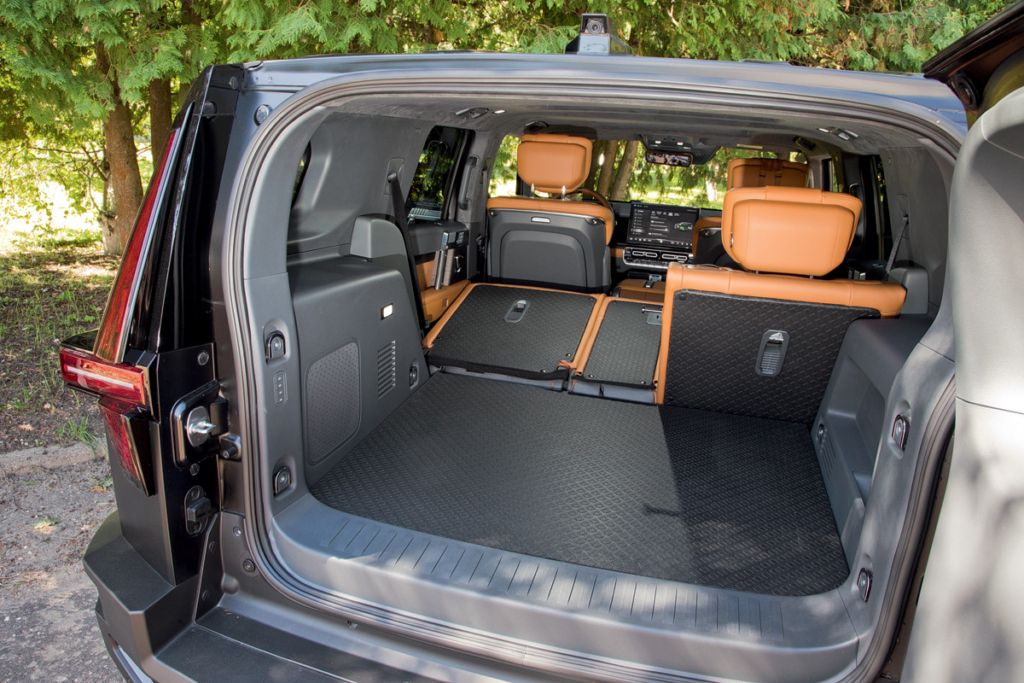
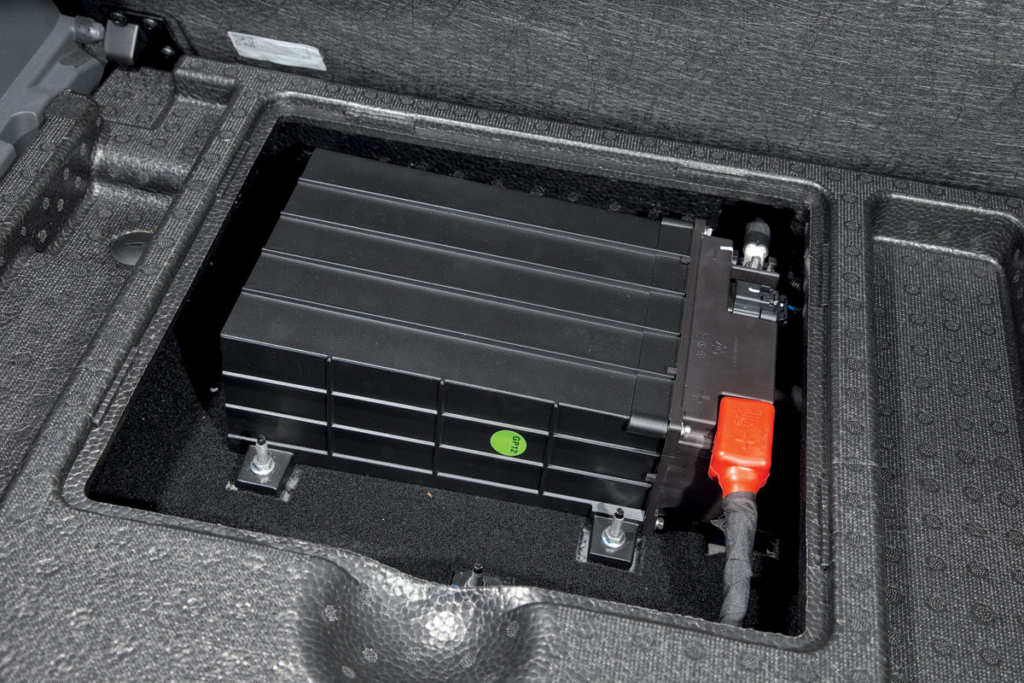
The fifth door is equipped with a closer, the compartment is large and easily transformable (alas, the backrests do not fall horizontally), under the floor there is a 12-volt lithium-ion battery with a capacity of 40 Ah
So, why does the M-Hero exist? A pricey attention-grabbing toy? But Dongfeng Monshi doesn’t really indulge in emotions—it’s rather ordinary in terms of driving. You wouldn’t exactly want to venture into the mud with it either. And the brand’s value is currently nonexistent—only the Chinese can connect Mengshi to the military vehicles from action movies thanks to the stylized “M” letter on the badge.
Doesn’t this smell like another false start for a sub-brand in the style of “produce ten thousand cars at a loss and then shut down the operation”?
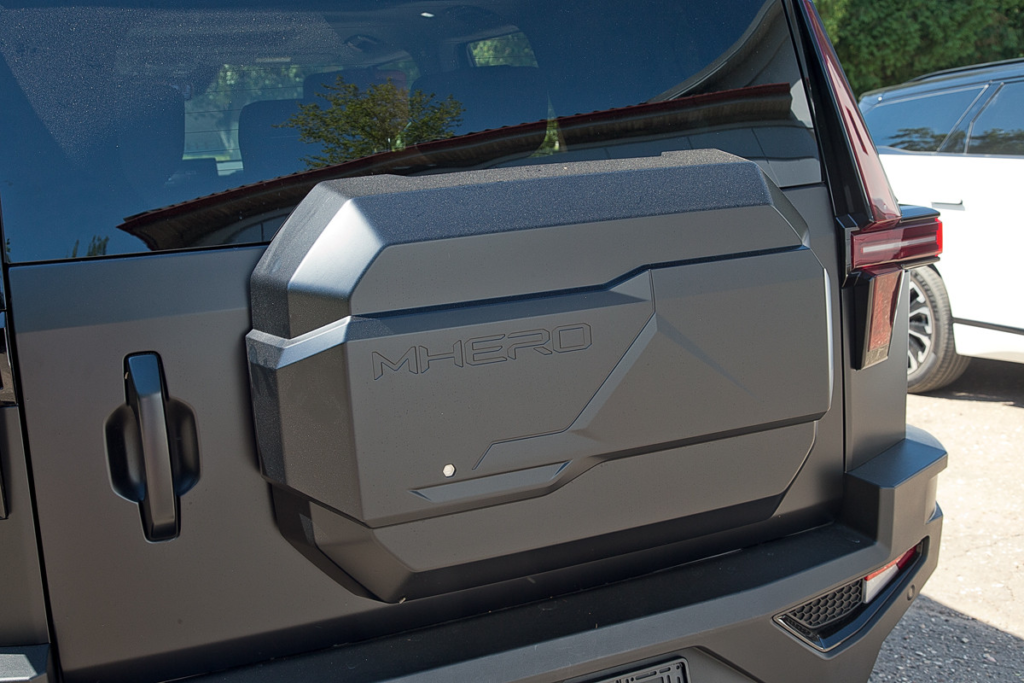
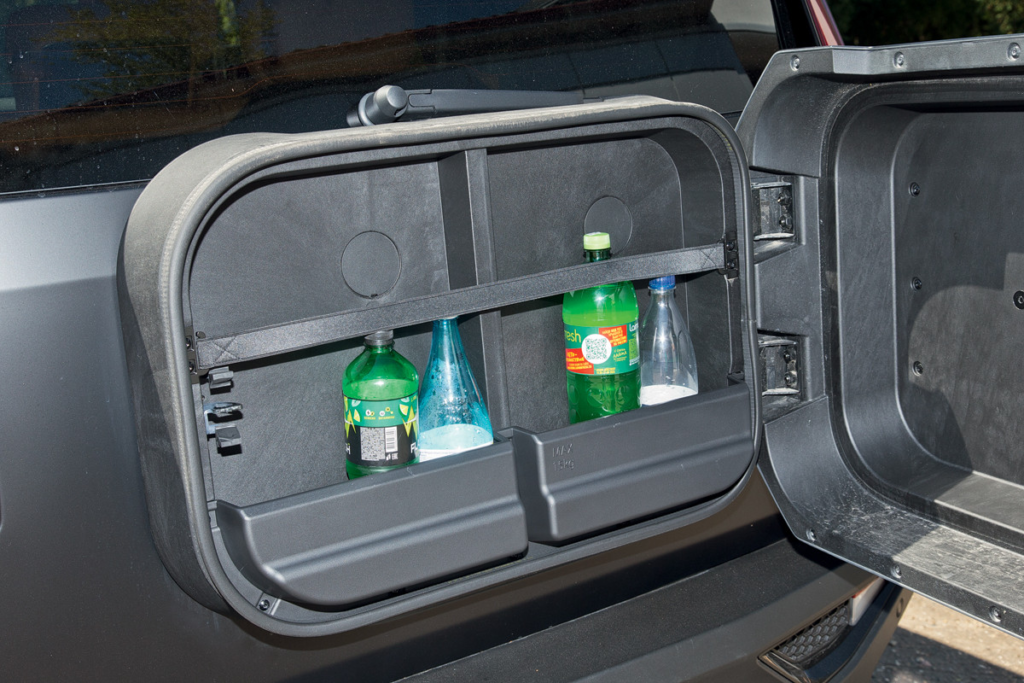
The outer plastic case serves a decorative function, but can hold six bottles. But there is no spare tire.
However, if we look at the M-Hero as a progress indicator for Chinese automotive manufacturing, it’s clear that the latest battle for respect has been won. Creating a high-tech off-roader from scratch with a mass of luxury options—done. Especially when you remember where the Second Automobile Works started and when. You can definitely feel the Eastern wind blowing.
But still—why 917? If anyone knows, please share!
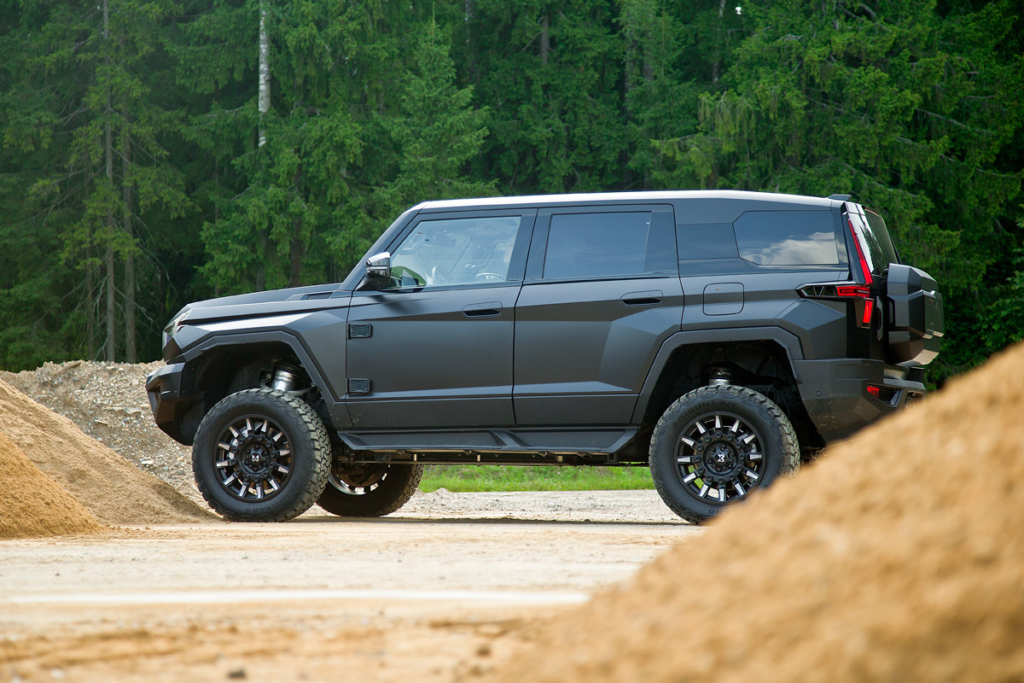
| Parameter | M-Hero 917 (Mengshi 917) |
|---|---|
| Body type | Five-door station wagon |
| Seating capacity | 5 |
| Luggage capacity, L | 452–1137* |
| Curb weight, kg | 3130 |
| Gross weight, kg | 3740 |
| Internal combustion engine | Gasoline, direct injection, turbocharged |
| Engine location | Front, transverse |
| Number and arrangement of cylinders | 4, inline |
| Displacement, cm³ | 1476 |
| Number of valves | 16 |
| Max. power, hp/kW | 197/145 |
| Max. torque, Nm | 300 |
| Max. generator power, hp/kW | 136/100 |
| Traction electric motors | Synchronous, permanent magnets |
| Number and location of motors | 3, one transverse at front axle, two transverse at rear axle |
| Max. power (electric motor), hp/kW | 272/200 |
| Max. torque (electric motor), Nm | 300 |
| Max. rotational speed, rpm | 13,000 |
| Transmission | Two-speed reducer at rear axle |
| Total power of electric motors, hp/kW | 816/600 |
| Total torque, Nm | 1050 |
| Drive type | All-wheel drive |
| Traction battery | Lithium-ion (NMC) |
| Battery capacity, kWh | 65.8 |
| Front suspension | Independent, pneumatic, double wishbones |
| Rear suspension | Independent, pneumatic, double wishbones |
| Tire size | 295/60 R20 |
| Maximum speed, km/h | 191 |
| Acceleration 0–100 km/h, s | 6.0 |
| Max. wading depth, mm | 900 |
| Range on battery charge (CLTC cycle), km | 200 |
| Max. total range (CLTC/WLTP cycle), km | 1026/750 |
| Fuel tank capacity, L | 84 |
| Fuel type | AI-92 gasoline |
*With rear seats folded
Photo: Dmitry Piterskiy | Dongfeng company
Expert group: Andrey Mokhov | Yaroslav Tsyplenkov
This is a translation. You can read the original article here: Тяжелый металл: внедорожник M-Hero 917 на полигоне

Published April 03, 2025 • 13m to read

